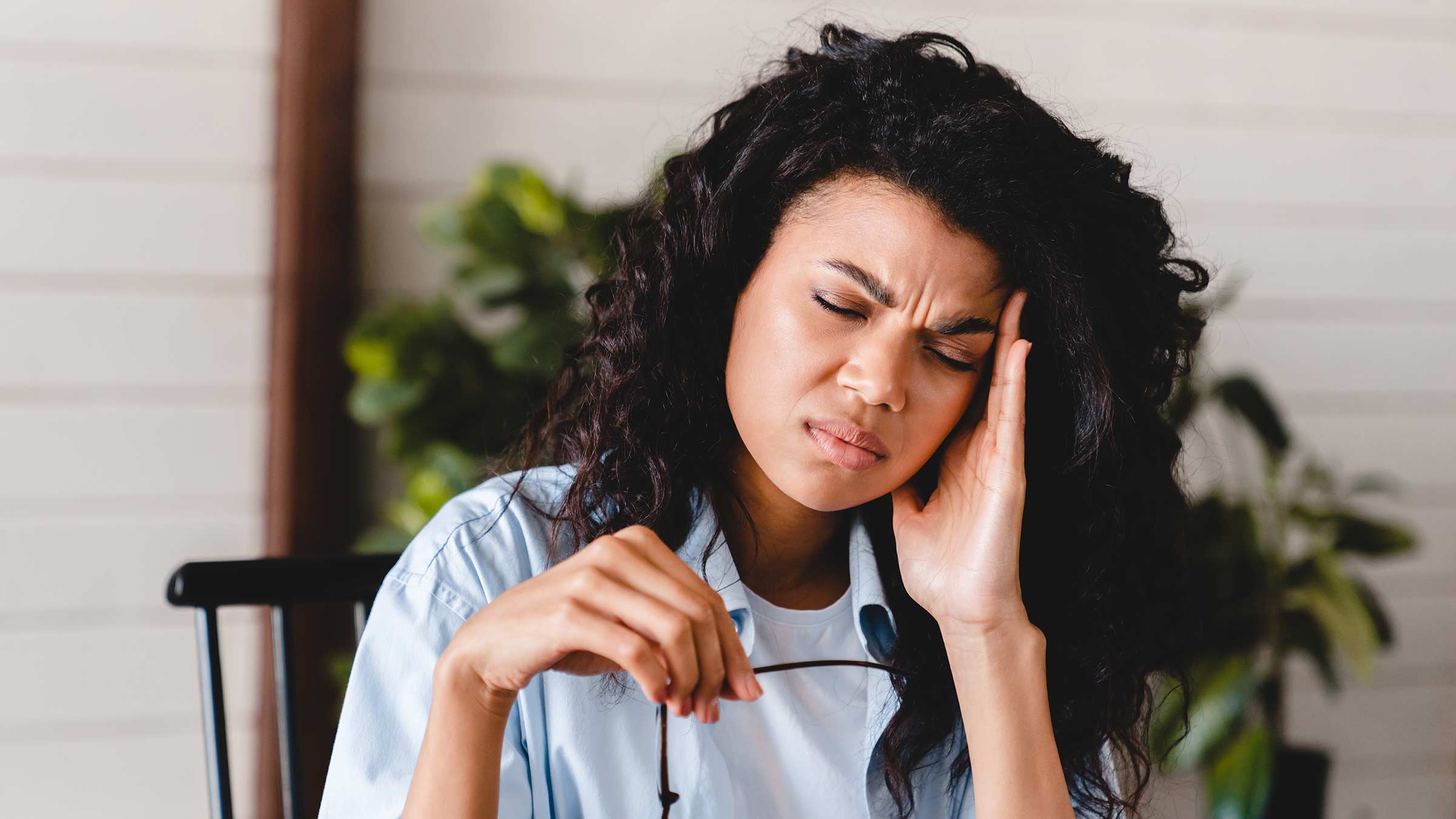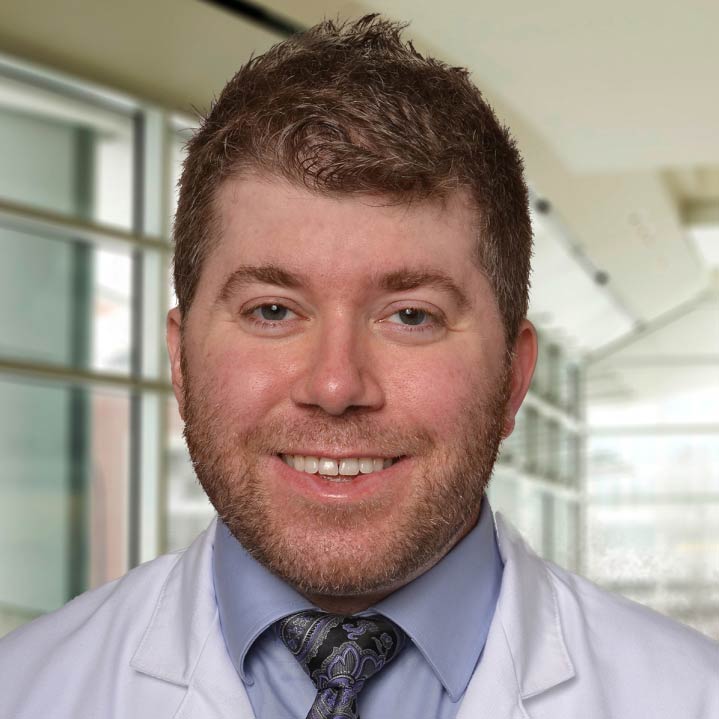
There are many types of headaches, with symptoms ranging from irritating to debilitating. And knowing the differences can be the first step toward addressing the pain and feeling like yourself again.
Primary headaches are the most common headaches. These are headaches that aren’t a result of another medical condition. The main types of primary headaches are tension-type headaches, migraine and cluster headaches. There are other types of headaches that fall into the primary category, but they’re rare.
Here are some tips for determining which kind of headache you have and how to best treat the pain and other symptoms.
Tension-type headaches
Possible tension headache symptoms
- Dull, aching pain in large areas of the head
- Tightness/pressure across the forehead and/or sides and back of the head, often like a band around the head
- Tenderness on the scalp, neck and shoulder muscles
- Can last hours to days
Tension headache home treatment
- Rest
- Ice and/or heat
- Over-the-counter pain medications, such as acetaminophen (Tylenol) or ibuprofen (Advil, Motrin)
Tension headache prevention
- Prescription medications, including tricyclic antidepressants, topiramate or the antidepressant mirtazapine
Migraine
Possible migraine symptoms
- More severe pain on one or both sides of the head (usually one side)
- Throbbing or pulsing pain
- Sensitivity to light and/or sound, sometimes to smell or touch
- Changes in vision (also called auras), such as blind spots, flashes of light, lines or stars
- Nausea, vomiting
- Can last hours to days
Migraine home treatment
- Over-the-counter nonsteroidal anti-inflammatory drugs (NSAIDs), such as ibuprofen (Advil, Motrin) or naproxen (Aleve)
- Over-the-counter combined analgesics (acetaminophen-aspirin-caffeine combinations)
- Prescription “rescue” medications, like triptans (sumatriptan, rizatriptan, etc.); however, it's important not to take rescue medication more than 10 days per month to avoid medication-overuse, or rebound, headaches
- Prescription antidepressants
- Prescription Botox injections
- Prescription CGRP (calcitonin gene-related peptide) inhibitors
- Devices that help control pain by stimulating nerves in the brain, head or upper neck. Available are Cefaly, Relivion, gammaCore, Nerivio and transcranial magnetic stimulation devices.
Migraine prevention
If you have migraine attacks four or more days each month, then preventive, or prophylactic, treatments are warranted and may include the below.
- Certain anti-epilepsy medications, certain blood pressure medications or the dementia medication memantine, all of which are only available by prescription
- Prescription antidepressants
- Prescription Botox injections
- Prescription CGRP (calcitonin gene-related peptide) inhibitors
- Devices that help control pain by stimulating nerves in the brain, head or upper neck. Available are Cefaly, Relivion, gammaCore, Nerivio and transcranial magnetic stimulation devices.
- Physical therapy
- Massage or acupuncture
Cluster headaches
Cluster headache symptoms
- Excruciating pain behind or around one eye, possibly radiating to other areas of the face, head or neck
- Pain on one side of the head/face
- Watering or red eyes, swelling and/or drooping lid on affected side
- Stuffy or runny nose
- Pale or flushed face, sweating on affected side
- Last three hours or less, may occur multiple times per day
Cluster headache home treatment
- Breathing high-flow oxygen, such as through an oxygen tank
- Prescription medication to stop or shorten cluster cycles
- Devices that help control pain by stimulating nerves in the brain, head or upper neck. Available are Cefaly, Relivion, gammaCore, Nerivio and transcranial magnetic stimulation devices.
Cluster headache prevention
If you have cluster headaches four or more days each month, then preventive, or prophylactic, treatments are warranted and may include the below.
- Prescription medications, such as Emgality (a CGRP inhibitor), verapamil (a calcium-channel blocker) and prednisone (a corticosteroid)
- Physical therapy
- Massage or acupuncture
Is it a sinus headache?
Migraine headaches are often confused with sinusitis because the pain can be similar. With sinus headaches, though, the pain is caused by inflammation in the sinus cavities.
Sinusitis usually happens after a cold and would be accompanied by pain in one cheek or the upper teeth, lasting days or longer. Migraine attacks commonly are accompanied by nausea or vomiting and can be worsened with noise or bright light.
If you’re having frequent sinus headaches, see your primary care provider for evaluation and possible referral to an ear, nose and throat (ENT) doctor or neurologist. Most people with true sinus headaches use decongestants or over-the-counter medications to treat them.
Other home remedies to relieve headaches
Essential oils
Peppermint or lavender essential oil can be rubbed onto the temples or behind the neck. However, there have been no controlled, scientific trials to study how effective these treatments may be.
Ginger
Another unstudied relief method is to use ginger to control nausea associated with migraine pain.
Coffee
Drinking a cup of coffee, similar to taking medication with caffeine, may also be effective.
Other migraine prevention tips
Keep a routine
Maintain regular meals, stay well hydrated, keep caffeine intake steady, regularly exercise, get regular sleep, minimize stress.
Don’t worry about your diet
As far as diet, there aren’t any particular eating styles that are proven to significantly impact migraine. There’s some data that shows a keto diet can help, but that’s a very difficult diet to adhere to, and the benefits stop once the diet stops.
If you do notice any consistent common triggers in foods, avoid those things, but don’t eliminate things from your diet just to see if it will help your migraine, because it probably won’t.
Take supplements
There’s good data on a number of supplements. We commonly recommend magnesium, riboflavin (vitamin B2) and coenzyme Q10.
How migraine pain is treated in urgent care or the emergency department
When a migraine attack is so severe that it requires a visit to urgent care or the emergency department, it’s generally treated with various IV medications, depending on the patient’s other health issues. Commonly, we use a nonsteroidal anti-inflammatory drug for pain along with medication for nausea. We may also use an antihistamine, steroid or muscle relaxer and magnesium and valproic acid as preventive measures.
These medications are available at The Ohio State University Wexner Medical Center’s urgent care locations, so a trip to the emergency department isn’t necessary to treat a serious migraine.
When a headache is an emergency and when to see a doctor
Call 911 or visit the emergency department if you have:
- The worst headache of your life
- Seizures
- Weakness or numbness on one side of your body
- Difficulty speaking
- Neurological changes that are not common with your typical migraine attacks
A new type of headache for you or worsening headaches should at least prompt a visit with your primary care provider, who might refer you to a neurologist if needed. Your primary care provider also can help you create a plan for preventing headaches, which may involve avoiding certain foods or activities, and/or taking a prescribed medication.
If your headaches or migraine attacks are causing visits to the emergency department, it’s time to make an appointment with a neurologist.

Take charge of your migraine headaches
Our patient-centered headache team has access to the latest research and treatment options to address your pain.
Take charge today




